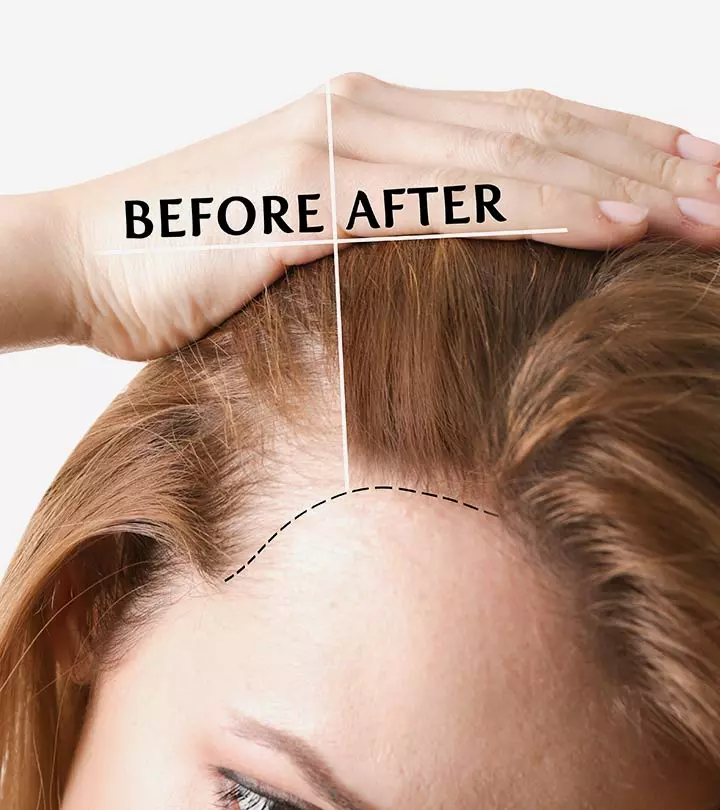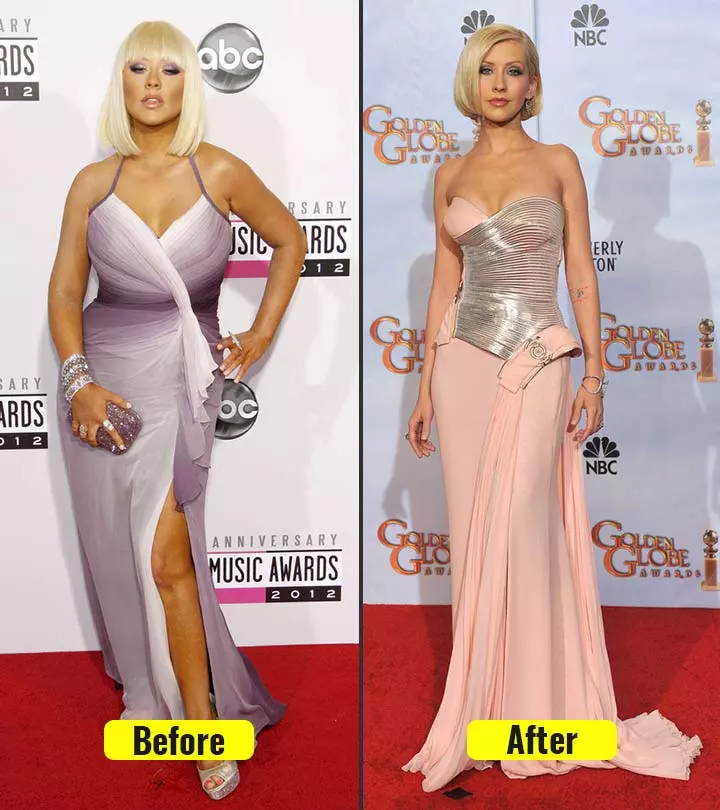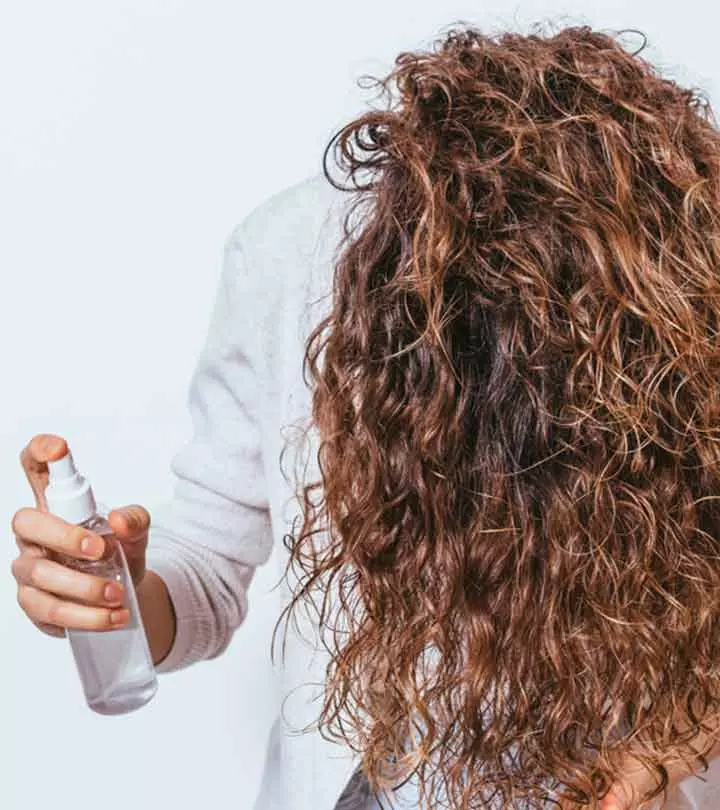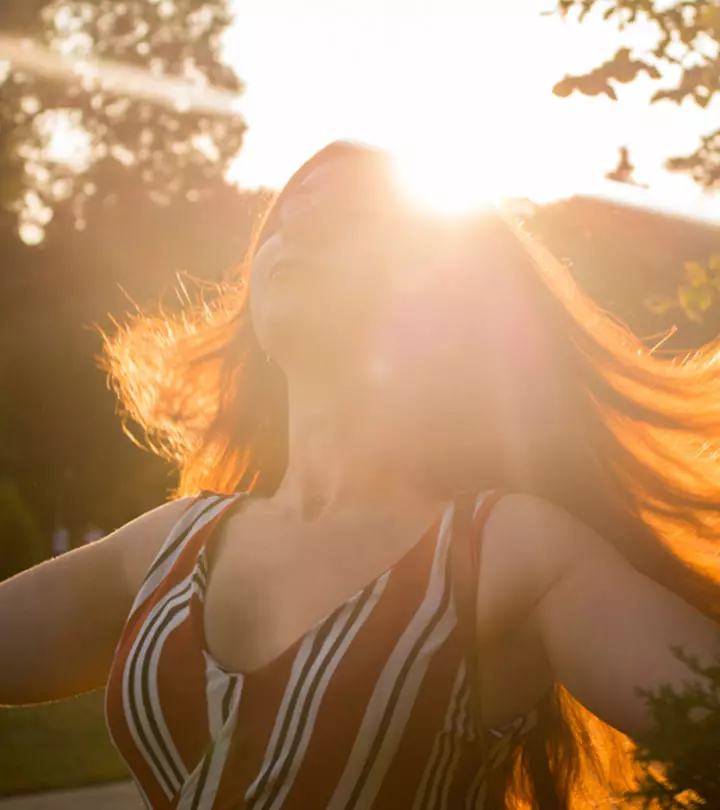Hair Transplant Growth Timeline: What Can You Expect?
Explore the timeline and track the progress of your hair growth journey

Image: Shutterstock
If you underwent a hair transplant surgery or are considering it, you may be wondering how long you need to wait before you see new hair growth. We have written this article to help you understand the hair transplant growth timeline. Your hair may take a reasonable amount of time to start growing. Scroll down to educate yourself about the different hair growth stages after a hair transplant, ways to increase hair growth, and any risks you should be aware of.
In This Article
What Happens In A Hair Transplant ?
In a hair transplant, follicles are taken from a donor scalp and implanted into a recipient scalp. Sometimes the donor follicles can be taken from another part of the recipient’s scalp. Hair transplant can be performed in different techniques, including Follicular Unit Transplant, Follicular Unit Extraction, Direct Hair Implantation, and Robotic Hair Transplant.
In a study focusing on hair transplantation in the United States, a survey with 1000 participants was conducted to explore attitudes toward hair loss and transplantation. It revealed that 40% of participants expressed feeling less attractive as their hair loss progressed, while 33% reported decreased confidence. Notably, women with extensive hair loss were willing to spend more on hair transplants compared to men, indicating a significant willingness to address hair loss concerns.
The hair may take a while to regrow. Here is what the hair growth timeline might look like after a hair transplant.
Key Takeaways
- It takes at least 2-3 months to witness the visible growth of new hair after the transplant.
- One can also use certain medications and therapies to speed up post-transplant hair growth.
- If a second transplant is needed, the best time to go ahead is between six and nine months after the first.
Stages Of Hair Growth After A Hair Transplant
It takes about two to three months to notice any hair growth after a hair transplant surgery. Full-length hair growth takes at least a year.
- 1 day to 3 weeks: The first few days after surgery is meant for post-op care (1). There will be some swelling after the procedure that would warrant a few oral steroids (your doctor would prescribe them). Your doctor may also prescribe 2% minoxidil lotion to stimulate hair growth.
- 2 to 3 weeks: Two to three weeks after the transplant, the hair shaft and the skin surrounding it fall off. But the planted hair follicle remains in a resting period (1). This is called shock loss and occurs due to the trauma of surgery (2).
- 8 to 12 weeks (2 to 4 months): New hair growth is usually visible about three months after the transplant. The roots of the hair shafts can be noticed on the scalp.
- 6 to 9 months: Substantial hair growth takes about six to nine months. The hair shafts continue to grow. This would be the time to get a second hair transplant procedure if required.
- 1 year: It takes a whole year to notice full-length hair growth. Hair grows naturally from here on.
Recognizing signs of new hair growth is not just a sign of progress; it’s a source of relief. It reassures you that your hair is growing back, instilling hope and confidence in the process.
 Pro Tip
Pro TipYou may accelerate the growth of the transplanted hair in the following ways.
How To Speed Up Growth Of Transplanted Hair
Doctors can prescribe a few medications to stimulate faster hair growth:
- 2% minoxidil lotion is suggested for women to accelerate hair growth. Research shows that minoxidil is very effective in speeding up hair growth (1).
- Platelet-rich plasma (PRP), is another method to stimulate faster hair growth (2). This treatment reduction uses proteins from the recipient’s blood to promote quick hair growth. However, knowing everything about PRP treatment for hair loss is crucial before implementing it, as it will educate you about the procedure, its pros and cons, etc., allowing you to make an informed decision.
- Stem cells have also been studied to be a viable method for stimulating hair growth (3).
- Prostaglandin therapy also may help stimulate new hair growth after a hair transplant surgery (3).
- Low-level light laser treatment for hair growth, known for wound healing, may also enhance hair growth after a transplant surgery (3).
- Other drugs like finasteride, dutasteride, and bimatoprost may also help stimulate faster hair growth (3).
Does a hair transplant offer a lasting remedy for baldness? Check out the following section to learn about it and more.
How Long Does A Hair Transplant Last?
A hair transplant isn’t just a quick fix – it is a long-lasting solution for baldness. Those transplanted locks, resistant to hair-thinning hormones, stick around for good. You will start flaunting noticeable growth within a few months, with ongoing improvements for a year. While your new hair is here to stay, remember that the procedure won’t stop regular hair loss in other areas. Maintain that scalp like a crown and follow post-op care to ensure your new locks stand the test of time. Regular follow-ups with a healthcare professional are essential for optimal results.
As with any surgery, a hair transplant comes with its own set of risks and challenges. Here are certain complications and side effects associated with a hair transplant.
Complications With Hair Growth After A Transplant
- A second hair transplant procedure may be required depending on the number of hair follicles yet to be transplanted.
- Sometimes, hair transplants can go wrong with hair either not growing or growing in a different texture. Though this can be corrected with hair transplant repair treatments, it may mean more complications and expense.
- Hypoaesthesia (numbness) has been noticed in donors. While this resolves on its own, it may last up to 18 months.
- The density of transplanted hair is usually lesser. This means that the hair grown might be thinner. This can, however, be corrected with a second set of thicker hair implants.
- An infection may result from the surgery. But this can be treated with antibiotics
- Sometimes the new hair follicle growth might be ingrown and lead to cysts. Your doctor may be required to burst the cysts and remove the ingrown hair.
- There also could be chances of the hair follicle graft not taking to your scalp. This means the implanted follicles refuse to grow. These follicles will need to be replaced to stimulate hair growth.
Here are some care tips recommended after surgery.
Post-Op Care
After the surgery, the first few days focus on post-op care (1).
- Oral steroids may be prescribed for any swelling. A headband can be worn to stop the swelling from spreading to the face.
- Hair should be washed with a mild shampoo on the second and third days after surgery.
- While you can comb your hair, ensure the comb’s teeth do not touch the transplanted follicular grafts.
- T-shirts and pull-overs should not be worn for at least three weeks after the surgery as they may pull the hair out.
- Avoid hair oils, strong shampoos, and other hair products for three weeks after surgery. Also, avoid helmets and other head-covering accessories.
- A 2% minoxidil lotion is prescribed to stimulate hair growth.
 Pro Tip
Pro TipIf you are thinking about getting a hair transplant, it is good to learn what to anticipate before proceeding. The hair transplant growth timeline and what you may expect in terms of outcomes are one thing to consider. While you may need to wait for hair to grow substantially following a hair transplant, this is true of any hair growth procedure. Hair growth can be accelerated with the use of certain therapies and techniques. However, before you try any of these, talk to your doctor. Long-term hair growth can also be aided by following a healthy diet and making positive lifestyle changes.
Frequently Asked Questions
Why is my hair transplant so slow?
There can be different reasons for transplanted hair growing slower than expected. However, every person’s physiology is different, and you should wait till 18 months for the hair to grow.
Does the crown take longer to grow after a hair transplant?
No. Hair growth depends on the health of the follicles, and hair can grow at different rates.There is no scientific evidence that crown hair grows slower after a transplant.
When can I touch transplanted hair?
You should wait at least 72 hours before touching the transplant site.
What is the success rate of hair transplants?
The success rate of hair transplants can range from 85 to 95%.
Are hair transplants obvious?
No. You can get natural-looking results if expert cosmetic surgeons do your hair transplant.
Does transplanted hair stay forever?
Yes. In most cases, the transplanted hair can last a lifetime.
It is essential to be patient and adhere to post-transplant care for optimal and natural-looking outcomes. Check the video below for a visual representation of the hair transplant growth timeline!
Read full bio of Dr. Rinky Kapoor
Read full bio of Anjali Sayee
Read full bio of Eshna Das
Read full bio of Swathi E



























Community Experiences
Join the conversation and become a part of our empowering community! Share your stories, experiences, and insights to connect with other beauty, lifestyle, and health enthusiasts.